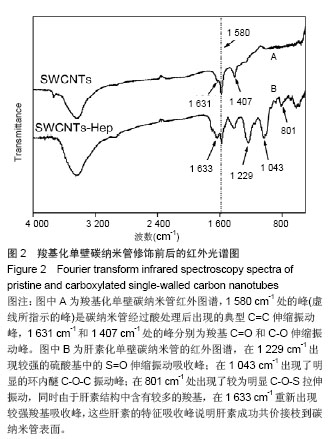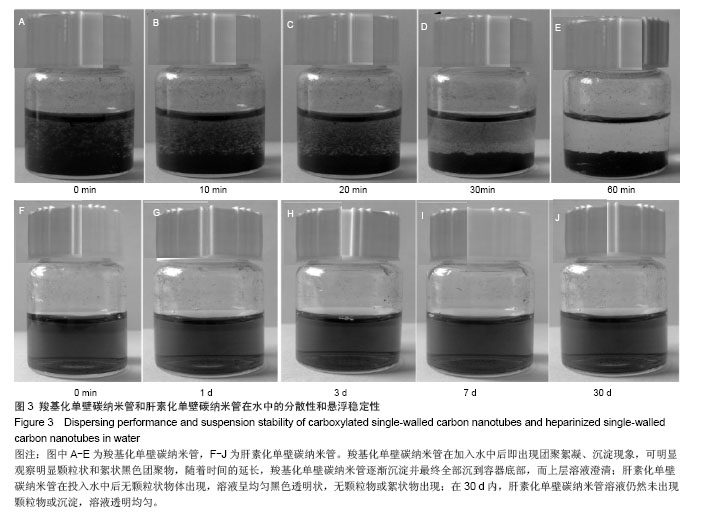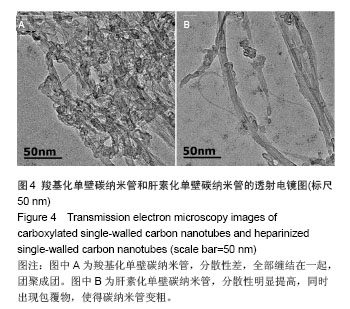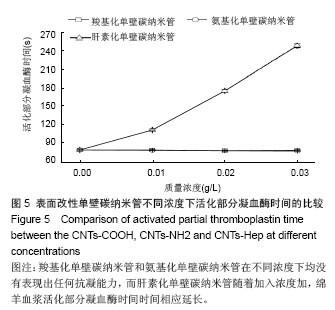中国组织工程研究 ›› 2014, Vol. 18 ›› Issue (21): 3316-3321.doi: 10.3969/j.issn.2095-4344.2014.21.007
• 纳米生物材料 nanobiomaterials • 上一篇 下一篇
肝素化单壁碳纳米管的制备、表征及生物相容性
彭一清1,陈荆晓1,滕丽萍2,赵善成1,程咏梅1,邓 超2,陈敬华1
- 1江南大学药学院,江苏省无锡市 214122;2江南大学无锡医学院,江苏省无锡市 214122
Preparation, characterization and biocompatibility of heparinized single-walled carbon nanotubes
Peng Yi-qing1, Chen Jing-xiao1, Teng Li-ping2, Zhao Shan-cheng1, Cheng Yong-mei1, Deng Chao2, Chen Jing-hua1
- 1 School of Pharmaceutical Science, Jiangnan University, Wuxi 214122, Jiangsu Province, China; 2 School of Wuxi Medical School, Jiangnan University, Wuxi 214122, Jiangsu Province, China
摘要:
背景:碳纳米管具有独特的结构和理化性质,在药物载体、生物传感器及生物材料等领域应用前景广阔,但其疏水性强,易缠绕聚集,并且具有一定的细胞毒性,致生物相容性差。 目的:制备肝素化单壁碳纳米管,探讨表面肝素化对碳纳米管水溶性及生物相容性的影响。 方法:采用共价接枝的方法制备肝素化单壁碳纳米管,通过红外光谱进行表征;考察肝素化单壁碳纳米管在水溶液中的分散情况和稳定性;硫酸咔唑显色测定单壁碳纳米管表面的肝素多糖接枝量;测定抗Ⅹa因子活性和活化部分凝血酶时间研究肝素化单壁碳纳米管的血液相容性,用MTT法研究10,20,40 mg/L肝素化单壁碳纳米管浸提液与小鼠骨髓干细胞的相容性。 结果与结论:肝素被成功接枝到单壁碳纳米管表面,肝素接枝量为257.53 mg/g;肝素化单壁碳纳米管在水溶液中分散良好,具有很好的悬浮稳定性;肝素化单壁碳纳米管抗Ⅹa因子活性为36.53 U/mg,具有明显的抗栓活性,能显著延长绵羊血浆活化部分凝血活酶时间,表现出显著的抗凝活性;肝素化单壁碳纳米管细胞毒性低,并对细胞增殖具有一定的促进作用。表明肝素化不仅能提高碳纳米管在水溶液中的分散性和稳定性,而且赋予其良好的血液相容性和细胞相容性。
中图分类号:





.jpg)
.jpg)